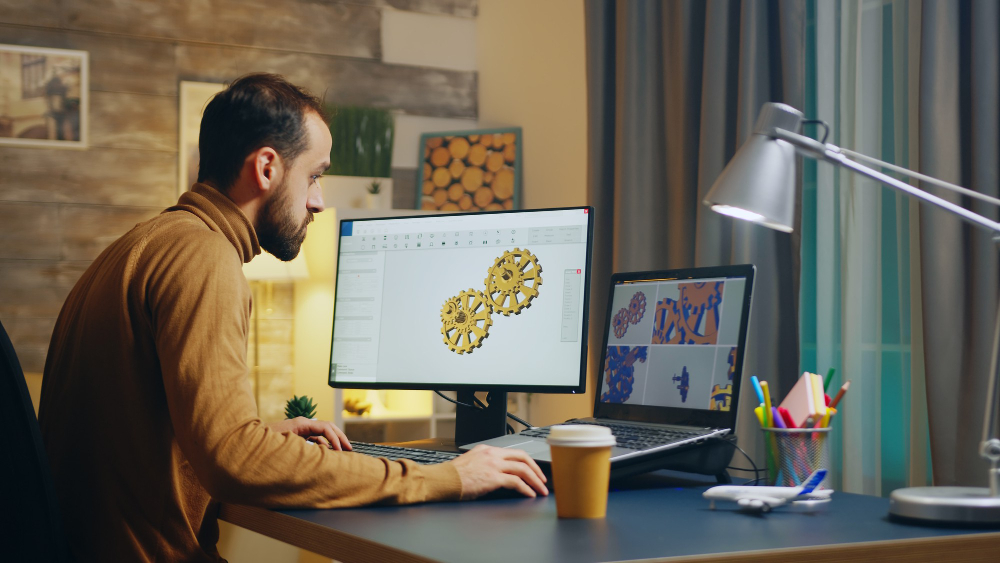Creating eye-catching digital art isn’t just about talent—it’s also about having the right software to support your creativity. Whether you’re sketching, painting, or designing, the best software for digital art empowers you to produce professional-quality work with precision and ease. From intuitive interfaces to powerful brush engines and layer controls, today’s tools offer a wide range of features for artists at every level. With so many choices available, selecting the right program can feel overwhelming. This guide breaks down the top options to help you find the perfect software to match your artistic goals and workflow.
The Ultimate List of Software for Digital Art
1. Adobe Photoshop
Adobe Photoshop remains a top choice for digital artists thanks to its versatile tools and unmatched editing power. From concept sketches to final renderings, Photoshop handles everything with precision. Layers, brushes, masks, and advanced blending options give artists full control over their work.
What makes Photoshop so popular is its flexibility. You can use it for photo manipulation, painting, illustration, and even animation. It supports both raster and vector workflows, making it a complete package for professionals.
2. Corel Painter
Corel Painter focuses heavily on replicating traditional art tools like oils, watercolors, and pastels. Its brush engine is incredibly responsive, offering a realistic experience for artists who enjoy natural media effects.
The software is known for its intuitive interface and extensive brush library. If you’re transitioning from canvas to screen, Corel Painter provides a familiar feel with digital flexibility.
3. Procreate
Procreate is an iPad-exclusive digital art app that’s rapidly become a favorite among illustrators and concept artists. It offers powerful tools with an interface that’s both sleek and easy to navigate.
With features like QuickShape, custom brushes, and time-lapse recording, Procreate makes it easy to sketch, paint, and share your art on the go. It’s optimized for Apple Pencil, making it incredibly responsive for drawing and shading.
4. Clip Studio Paint
Clip Studio Paint is a dream come true for comic artists and illustrators. Its robust vector tools, frame-by-frame animation, and detailed brush customization make it one of the best software for digital art—especially if your focus is on manga or webcomics.
It’s suitable for both amateurs and professionals, offering a balance between usability and high-level functionality.
5. Krita
Krita is a free, open-source software built by artists for artists. It’s known for its clean layout, powerful brush engine, and resource manager that allows you to import custom brushes and textures.
Despite being free, Krita competes with paid programs in terms of performance and features. It supports layers, HDR painting, and animation, making it an excellent tool for budget-conscious creators.
6. Affinity Designer
Affinity Designer excels in vector art creation, though it also handles raster elements quite well. It’s a go-to tool for illustrators, game designers, and branding artists.
One standout feature is the ability to switch between vector and raster workspaces within a single file. With real-time performance and smooth zooming up to one million percent, it delivers a seamless experience.
7. Autodesk SketchBook
Autodesk SketchBook offers a clean and distraction-free interface that lets you focus purely on drawing. Its fluid engine supports pen pressure sensitivity and works flawlessly on tablets.
SketchBook is ideal for quick concept sketches, illustrations, and storyboarding. It also allows for unlimited layers, perspective guides, and symmetry tools, making it a flexible tool for many art styles.
8. Rebelle
Rebelle offers a unique twist by simulating the behavior of real paint and water on canvas. It’s perfect for artists who love experimenting with watercolors, acrylics, and inks.
What sets Rebelle apart is its real-world brush simulation. You can tilt the canvas, control water flow, and watch paint blend organically. This software feels more like painting than coding strokes with a mouse or stylus.
9. ArtRage
ArtRage focuses on delivering an ultra-realistic painting experience. It mimics real-world media, complete with texture effects, color mixing, and paint thickness simulation.
Whether you’re into oil painting, pencil sketching, or pastels, ArtRage offers a delightful blend of traditional techniques and digital convenience. Its intuitive layout makes it easy for beginners to pick up while offering enough depth for professionals.
10. MediBang Paint
MediBang Paint is a lightweight, cloud-based art software that caters to comic artists and illustrators. It’s free and available across platforms including Windows, Mac, iOS, and Android.
The cloud syncing makes it easy to switch between devices, while its comic creation tools like panels, screen tones, and dialogue balloons streamline the design process for manga artists.
Key Features to Look for in Digital Art Software
Not all software for digital art offers the same features. While choosing, look for tools that enhance creativity rather than limit it. Here are the must-have features:
1) Custom Brush Settings
One of the most important features in any software for digital art is the ability to customize brushes. Adjusting pressure sensitivity, texture, shape, and flow allows you to create strokes that feel natural and unique. Custom brushes enable artists to mimic traditional media like pencils, oils, or watercolors, or invent entirely new styles. This flexibility helps bring your creative vision to life with precision and individuality.
2) Layer Management
Effective layer management is essential for organizing your artwork. Layers let you separate different elements, making it easier to edit or adjust parts of your design without affecting the whole image. Look for software that offers intuitive layering systems, including options like grouping, locking, and blending modes. This control streamlines complex projects and keeps your workflow smooth.
3) Color Selection Tools
A powerful color selection system is a must-have for digital artists. Intuitive color pickers, palettes, and gradient tools help you achieve the perfect shades and tones. Features such as color history, eye droppers, and swatch saving speed up your process, allowing for consistent color usage and smooth blending. The right software makes choosing and applying colors effortless, enhancing your artwork’s vibrancy.
4) Vector and Raster Support
Different art styles and projects require different formats. Raster graphics are pixel-based and perfect for detailed painting and shading, while vector graphics allow for scalable, crisp designs ideal for logos and illustrations. Choosing software that supports both vector and raster formats lets you switch between them as needed without losing quality, offering more creative freedom and versatility.
5) Tablet Compatibility
If you use a drawing tablet or stylus, tablet compatibility is crucial. The software should fully support pen pressure sensitivity, tilt detection, and customizable shortcuts to provide a natural drawing experience. This responsiveness ensures that your strokes feel fluid and accurate, making your digital art process feel as close to traditional drawing as possible.
How to Choose the Best One
Finding the right software for digital art depends on several personal factors. Start by identifying your artistic goals. Are you focused on painting, illustration, comics, or graphic design? Each tool has its strengths, and aligning the software’s features with your style makes a significant difference.
Budget also plays a crucial role. While free options like Krita and MediBang Paint offer excellent quality, paid tools like Procreate or Adobe Photoshop provide more advanced features and support.
Ease of use is another consideration. Some programs come with a steep learning curve, while others allow you to start creating right away. Trial versions can help you test different platforms before committing. Lastly, check for community support and tutorials. A strong user base means more learning resources, helping you grow faster as an artist.
Finding Your Perfect Digital Art Software
Mastering digital art starts with the right tool. Whether you need professional power like Adobe Photoshop or prefer the hands-on, intuitive nature of Procreate, there’s a perfect software for digital art out there for you.
Experiment with a few options, explore their unique features, and focus on software that matches your creative workflow. The best tool is the one that helps you turn ideas into art—smoothly, efficiently, and with joy.
Interesting Reads





